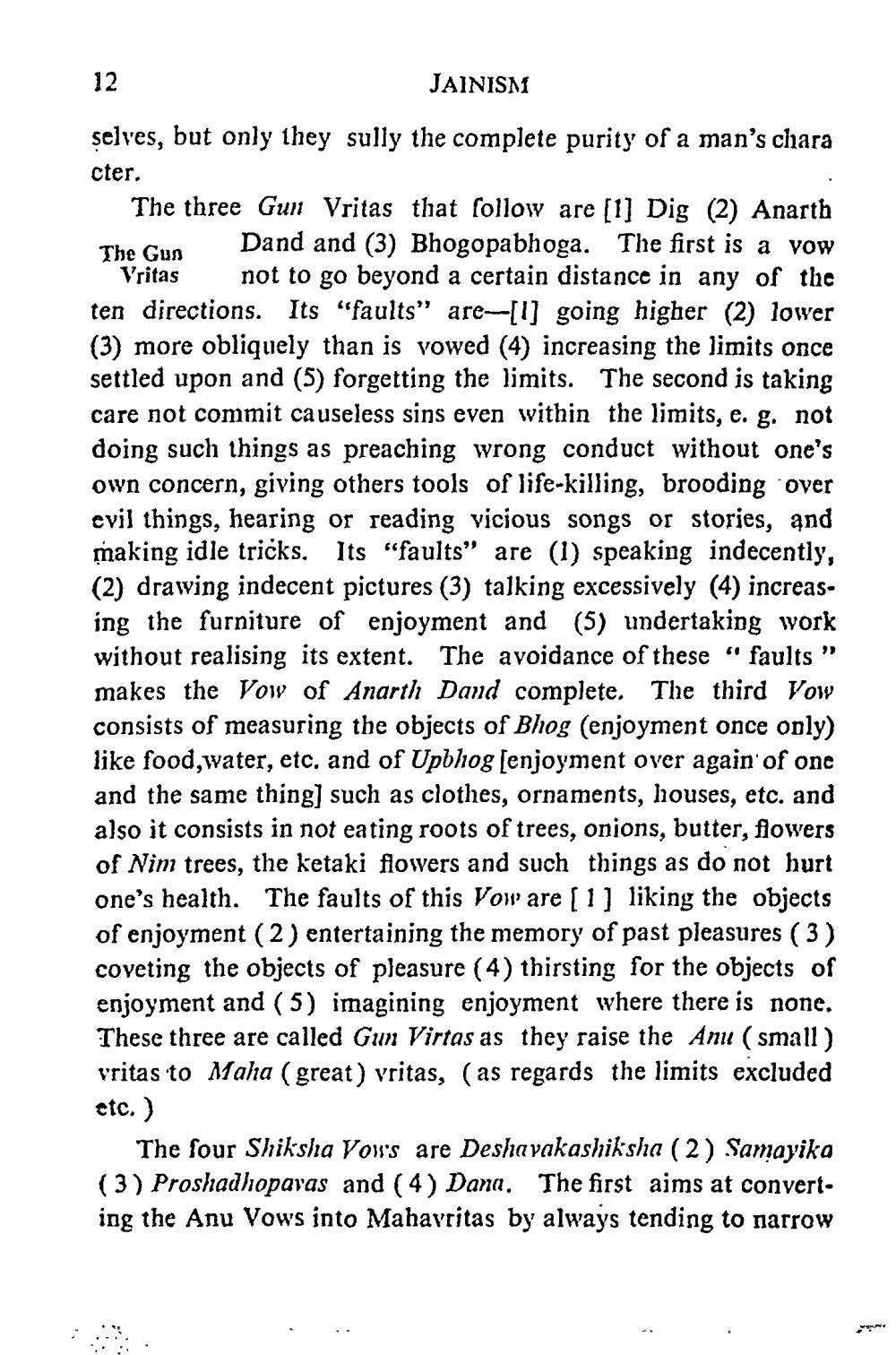________________
12
JAINISM
selves, but only they sully the complete purity of a man's chara cter.
The three Gun Vritas that follow are [1] Dig (2) Anarth Dand and (3) Bhogopabhoga. The first is a vow
The Gun
Vritas not to go beyond a certain distance in any of the ten directions. Its "faults" are-[1] going higher (2) lower (3) more obliquely than is vowed (4) increasing the limits once settled upon and (5) forgetting the limits. The second is taking care not commit causeless sins even within the limits, e. g. not doing such things as preaching wrong conduct without one's own concern, giving others tools of life-killing, brooding over evil things, hearing or reading vicious songs or stories, and making idle tricks. Its "faults" are (1) speaking indecently, (2) drawing indecent pictures (3) talking excessively (4) increasing the furniture of enjoyment and (5) undertaking work without realising its extent. The avoidance of these "faults" makes the Vow of Anarth Dand complete. The third Vow consists of measuring the objects of Bhog (enjoyment once only) like food, water, etc. and of Upbhog [enjoyment over again of one and the same thing] such as clothes, ornaments, houses, etc. and also it consists in not eating roots of trees, onions, butter, flowers of Nim trees, the ketaki flowers and such things as do not hurt one's health. The faults of this Vow are [1] liking the objects of enjoyment (2) entertaining the memory of past pleasures (3) coveting the objects of pleasure (4) thirsting for the objects of enjoyment and (5) imagining enjoyment where there is none. These three are called Gun Virtas as they raise the Anu (small) vritas to Maha (great) vritas, (as regards the limits excluded etc.)
The four Shiksha Vows are Deshavakashiksha (2) Samayika (3) Proshadhopavas and (4) Dana. The first aims at converting the Anu Vows into Mahavritas by always tending to narrow




